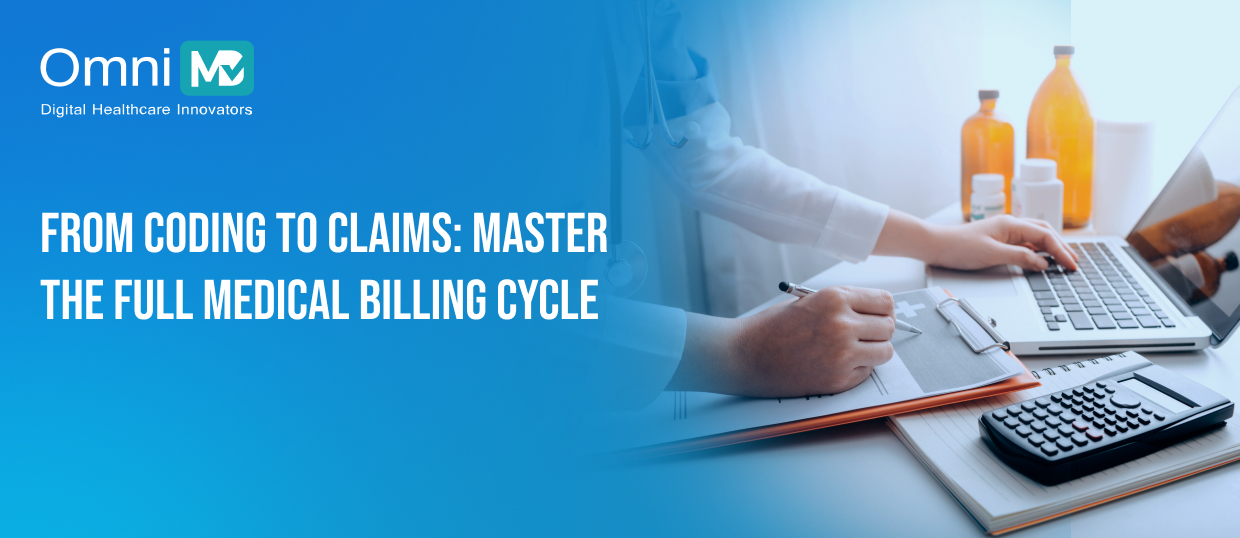Complete Guide To Medical Billing: Process, Purpose, And Impact
Medical billing makes sure money moves correctly, and records stay clear. It connects providers, insurers, and patients. It forms the base for good care in health services.
Becker’s medical review found that about 80 percent of medical bills in the US have mistakes. These mistakes slow payments, reduce trust, and create confusion for patients. Knowing medical billing helps people make better choices and avoid problems. This blog explains the role, process, and effect of medical billing in payment systems. It also shows why accuracy and proper checks are important.
Four Ws And One H In Medical Billing:
People use the 5W1H method to get clear and correct answers. This method helps to understand medical billing in a simple way. Knowing the main rules of Medical billing services helps organizations reduce errors, track work properly, and keep money flowing steadily. It also encourages using modern systems and patient-focused approaches.
Understanding what medical billing services are will help staff keep records correct and check work carefully. Seeing when and where billing can go wrong allows steps to protect money flow and avoid mistakes. Knowing why billing changed over time helps offices follow rules, meet market needs, and keep up with medical improvements. The first step is to understand what medical billing means and how accuracy affects the whole process.
What Is Medical Billing?
Medical billing in the US healthcare system is the process by which a care provider seeks payment from an insurance company for treatment given. The process begins after a patient receives care, when the provider submits a claim. This claim holds details about diagnosis plans for care and lists of medicines, and the company studies this claim under its rules. The payment goes to the provider or the patient, and the explanation looks simple, yet the full procedure stays more complex. Medical billing moves through many steps, and each step brings its own set of hurdles.
First, a person gathers all needed patient data, such as age details, insurance info, and past medical records, and this set of data moves to the insurance side for checking. Then every service given, which may include repeated visits, diagnosis steps, treatments, and medicines, moves into written notes, and these notes shift into common codes used in the industry. After this coding task, the claim moves to the insurance company, and the provider watches the progress, makes needed changes, and waits until the claim reaches acceptance and later gets payment. Finding steady solutions needs an understanding of these long phases, though it also needs a study of the deeper reasons that cause these issues in the first place.
When Does It Face Difficulties?
Finding these underlying reasons is essential to controlling the problems that medical billing services commonly face. Certain regions are more prone to mistakes and delays.
Coding Errors
A study by WorldMetrics says that medical coding mistakes can create heavy losses for each claim, and the usual reasons include missing details about patient information
Causes:
- Missing patient information such as age, medical history, etc.
- Incomplete data about symptoms and repeated visits.
- Wrong codes assigned to services.
- Limited knowledge of ICD medical coding systems.
- Misreading of medical terms.
Solutions:
- Give clear training for coders and staff on proper records.
- Run coded bills through multiple quality checks.
- Use modern tools like EHR systems and medical coding software.
Claim Denials
A study from Experian Health shows that many providers faced more denied claims from 2022 to 2024. The main reason was mistakes made in medical coding.
Causes:
- Errors in medical coding.
- Missing pre-authorization.
- Duplicate claims submitted.
- Lack of proof of medical necessity.
Solutions:
- Create standard procedures for medical documentation.
- Stay informed with insurance rules and policies.
- Ensure clear communication among providers and staff members.
- Conduct regular audits to identify common denial patterns.
Claim Rejections
A rejected claim stops before the processing area, and this happens at the clearinghouse. A rejected claim can return after correction, but a denied claim cannot bring payment, and a report in Healthcare Finance notes that rejected claims are rising between ten and fifteen percent.
Causes:
- Incorrect or missing patient information.
- Failure to follow policy rules.
- Wrong diagnostic or procedural codes.
- Late claim submissions.
- Outdated insurance details.
Solutions:
- Maintain complete and accurate medical records.
- Submit claims within the allowed time frame.
- Keep all procedures and diagnostic codes correct.
- Do routine checks to find issues and fix them.
- Keep staff knowledgeable about insurance restrictions.
Overlooking Compliance
A recent post in the HIPAA Journal states that many records were exposed in thousands of data breaches in 2021, and reasons include limited awareness of healthcare rules.
Causes:
- Lack of awareness of healthcare regulations.
- Missing role-based compliance training.
- Miscommunication among staff.
- Insufficient resources dedicated to compliance.
Solutions:
- Form a dedicated compliance team.
- Use compliance management software.
- Promote a culture that prioritizes rules.
- Perform regular audits to check documentation.
Factors That Have Contributed To Its Evolution
Technology has made the medical billing services change slowly over many years. Electronic Health Records started the process and brought more order to storing patient information. Computer-assisted medical coding came next and made the coding of treatments more accurate. Machines learned from data and added intelligence to the billing process. Generative AI began to suggest improvements and predict errors before they happen. Accuracy increased, transparency grew, efficiency became stronger, and security improved. All these changes pushed the medical billing services to grow into what they are today. Here are the factors that drove the change in the evolution:
A Rise In Patient-Centric Care
Patients now take an active part in healthcare. Clinics and hospitals adapt to serve people’s needs and rights. Global events and health campaigns support this shift.
This change opens doors to:
- Clear billing that stays easy to read and easy to follow for every person.
- Better message flow between patients and care teams and insurance teams.
- Easy entry to digital portals and RCM systems for steady tracking of care and payment.
- Feedback systems, automated payment options, and upfront cost estimates.
The Dynamic Nature Of Healthcare Regulations
Regulations in healthcare change often to meet new challenges and technology.Institutions must adjust quickly and follow new rules. This led to:
- Software that manages and updates policies in real time.
- Standard programs that assess risks and guide compliance.
- Regular reporting tools and real-time data analysis.
- Dedicated compliance teams, training, and monitoring.
Increased Focus On Data Security And Privacy
Healthcare holds large amounts of sensitive information. Past breaches showed risks of misuse and loss. This need caused:
- Encryption for data storage and transfer.
- Strong access limits stay in place.
- Tight digital safety steps stand firm.
- Regular reviews keep rules in place.
The Advent Of AI-Driven Solutions
Old manual billing stayed slow with many errors. AI makes tasks faster and more accurate. Its impact includes:
- Automation of data entry, coding, and claim processing.
- Predictive analysis for data-driven decision making.
- Fraud detection protects financial resources.
- Real-time billing reporting, simplified workflows, and scalability.
How Are We Keeping You At The Forefront Of This Change
We have served more than six hundred clients across the world. We are leaders in advanced billing solutions. We give service all the time, and we manage more than ninety-four thousand coded charts every month. You can trust us for faster payments and simpler processes with lower costs.
We do this by using more automation and by removing repeated tasks. We make workflows that follow the best methods in the industry. You can contact us to use the combination of our team, our ways of working, and technology innovations, with strong care for the clients we work with.
Final Thoughts:
Every claim matters in medical billing services, and small mistakes can cause big losses. Revenue and efficiency are greatly increased by accurate medical coding and billing. Studies indicate that precise medical billing can minimize errors by over 90% and enhance revenue collection by roughly 30%. It’s not just paperwork because it’s essential for effective operations and dependable performance. Keeping accurate records and managing them well supports growth and stability. Relying on our expert medical billing services can make operations smoother and revenue stronger.

Boost Revenue with Tailored RCM
Take Control of Your Practice’s Revenue with Customized RCM Solutions

 Written by Dr. Girirajtosh Purohit
Written by Dr. Girirajtosh Purohit